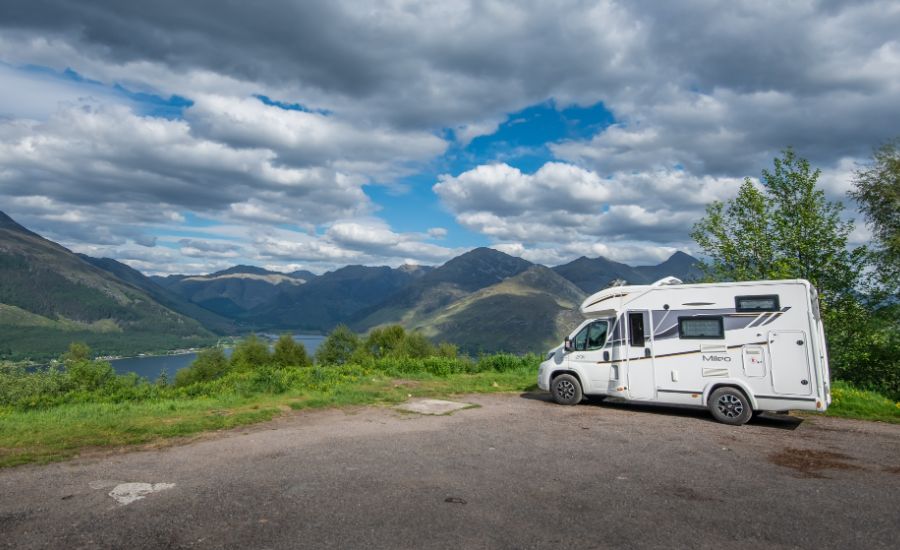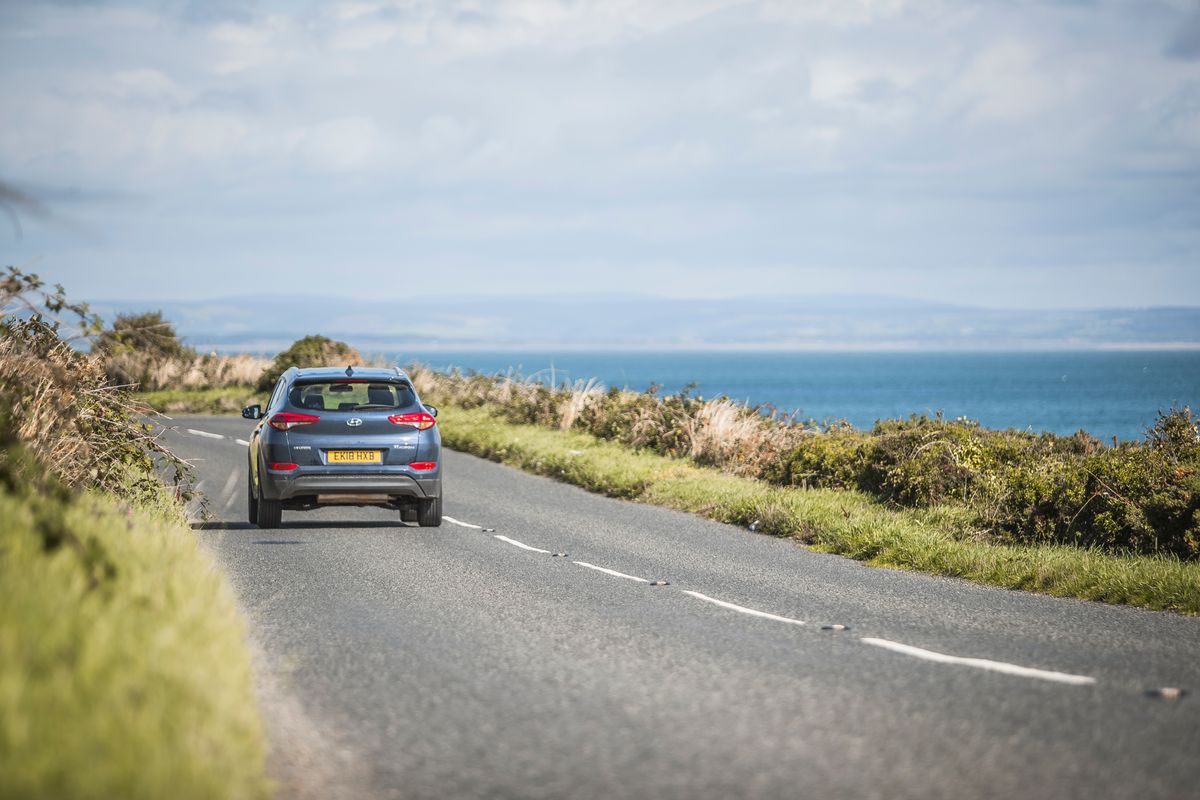Cookies need to be enabled to watch this video
JavaScript needs to be enabled to watch this video. You can turn this on in your browser settings.
Image: Driving the Bealach na Ba
© VisitScotland / Kenny Lam
#DriveOnTheLeft Campaign
Make sure to always drive on the left hand side of the road in Scotland. Before you embark on your journey, watch this handy video guide from the Scottish Government for more information about Scotland’s roads, including how to navigate single-track roads and passing places.
Princes Street seen from the Scott Monument in Edinburgh
© VisitScotland / Kenny Lam
What side of the road do I drive on in Scotland?
Always drive on the left hand side of the road.
What is the speed limit in Scotland?
Speed limits are regularly signposted - look out for a circular sign, with a red border and number (in miles per hour).
If there's no signpost, national speed limits apply. These are:
Motorways
- 70 mph (112 km/h) for cars.
- 60 mph (96 km/h) for cars towing caravans or trailers.
Dual carriageways
- 70 mph (112 km/h) for cars.
- 60 mph (96 km/h) for cars towing caravans or trailers.
Single carriageways
- 60 mph (96 km/h) for cars.
- 50 mph (80 km/h) for cars towing caravans or trailers.
Built-up areas
- 30 mph (48 km/h) or 20 mph (32 km/h), which is now quite common in city and town centres.
Find out more on speed limits for all types of vehicles
What licence do I need to drive in Scotland?
- If you're coming from a European Union country - as long as you have a valid licence, you can drive any type of vehicle listed on your license in Scotland.
- If you're coming from outside the EU - as long as you have a valid licence from your own country, you can drive any small vehicle (e.g. car or motorcycle) in the UK for up to 12 months.
Check you are eligible to drive in Scotland
What is the drink drive limit in Scotland?
Driving under the influence of alcohol is taken very seriously in Scotland and the UK and there can be heavy penalties for those found to be above the legal blood/alcohol limit.
The legal limit is 50 mg of alcohol in 100 ml of blood.
Read more about the drink-drive limit in Scotland
What insurance and registration do I need?
If you're bringing your own car, you'll need:
- Vehicle registration or ownership documents with you at all times.
- Insurance - every driver on the road in Scotland must have at least third-party insurance cover.
- If you're going to be here for more than six months (during a 12 month period), you'll need to be aware of rules on number plates that have symbols not used in the UK.


